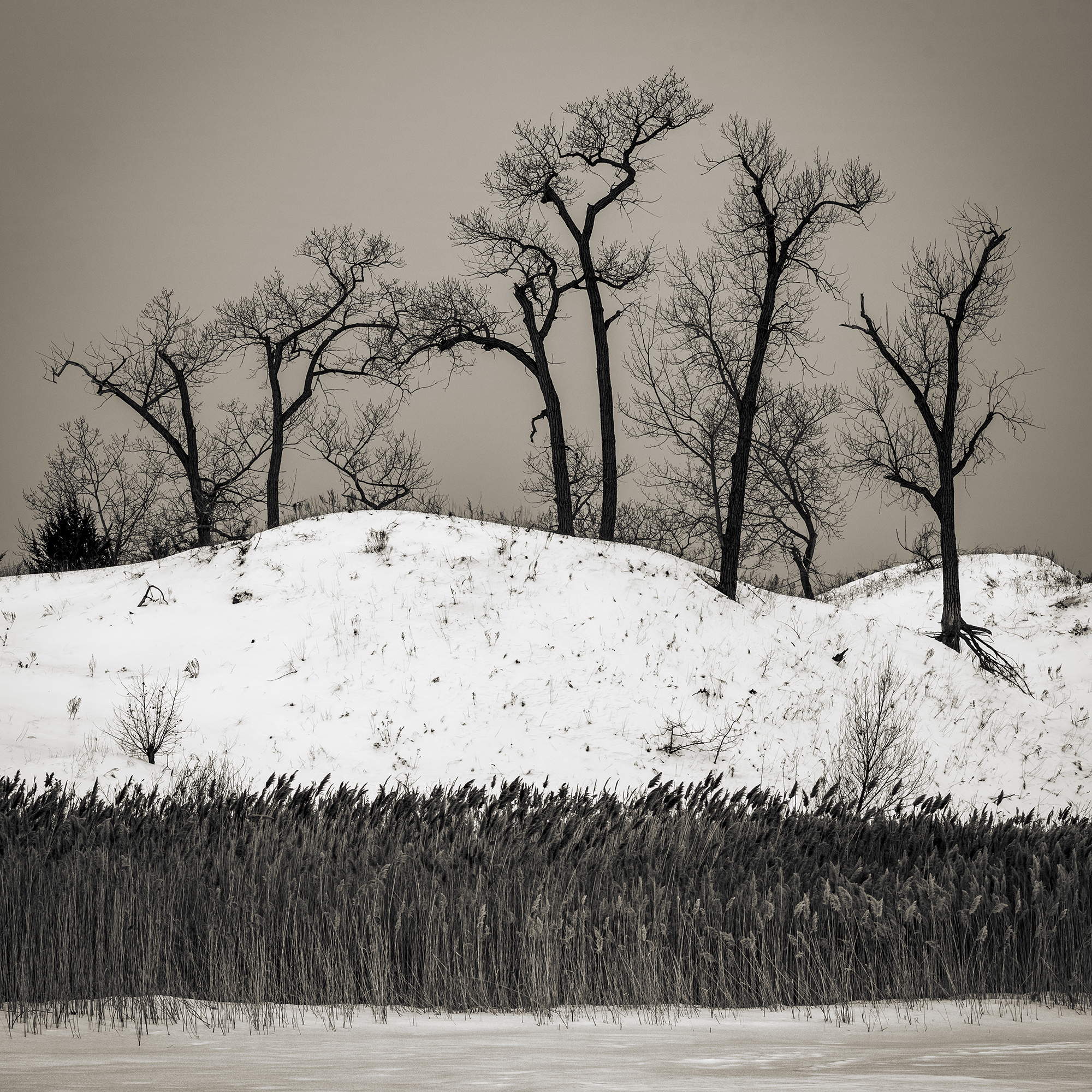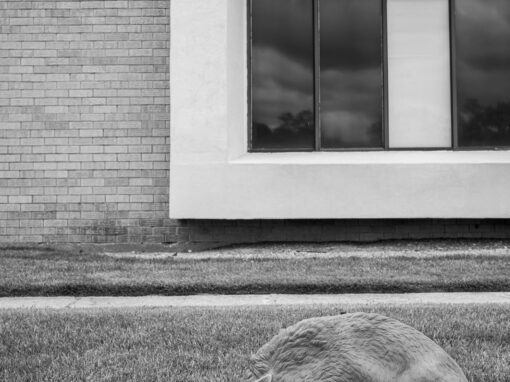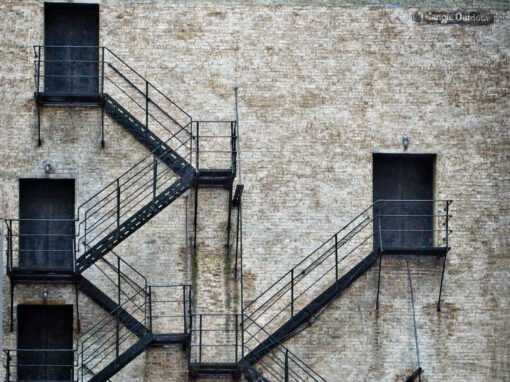The winter holds an opportunity that other seasons do not. In the frozen landscape, otherwise inaccessible locations become available for exploration when the open water and marshes freeze over. New vantage points give familiar locations a whole new creative dimension to play with when you step out onto the solid waters. My winter here at home has been a long and cold one but I enjoy using this opportunity to better learn my landscape. I feel that when I’m out on the ice, I’m on the inside looking out of a window, at a scene where I can watch myself traverse the land in warmer seasons. In this way, a more fulsome understanding of my home is possible.
This location is in Sandbanks Provincial Park in Southern Ontario, Canada and is very close to my home. I’ve been hiking this park for over 40 years, but only the last 7 with a camera. In the years previous to my discovery of the camera as a creative tool, I had been unconsciously compiling a visual inventory of the intricacies and nuances of this landscape. Like a true friend, you only understand the small things about them after you’ve spent a long time together. As such, I have been able to document the true soul of the land as an equal instead of a visitor. I feel this is important for landscape photography. To be able to reach beyond the typical popular images we see, it is necessary to have a long conversation with the landscape.
From a technical perspective, my gear is quite sparse. I carry one camera and two lenses, a Nikon Z7, and a 50mm and 85mm prime. I often leave the tripod at home in favor of moving light and having one less distraction between myself and the creative process.
Soon the frozen lake I stood on will melt, and the crash of waves and the sounds of vacationers will return, back to reality.
What are the TWO most impactful features that make your image a good photograph? Don’t be shy!
It was important that the day be overcast. Sun shadows would have shifted the mood into a completely different image that I think would not have succeeded. From an editing standpoint, the square crop tightened and uncluttered the image, and by toning just the mid-tones, I was able to retain the snowy highlights as pure white, giving the image an additional dimension.
If you could make this photo again, what would be the ONE thing you would like to do better or different?
I would have focus-stacked it. I did take this image at f11 from some distance, so the focus on all subjects is acceptable, but if it were stacked, it would have allowed me to use a larger aperture and perhaps made parts of the image sharper. I don’t regret it though.
Jason Pettit shared this photograph with the FRAMES Facebook Group.
Photographer
Jason Pettit, Bloomfield, Ontario, Canada
Equipment and settings
Nikon Z7, Nikkor 85mm 1.8 S
Handheld at f/11, 1/125s, ISO 64




